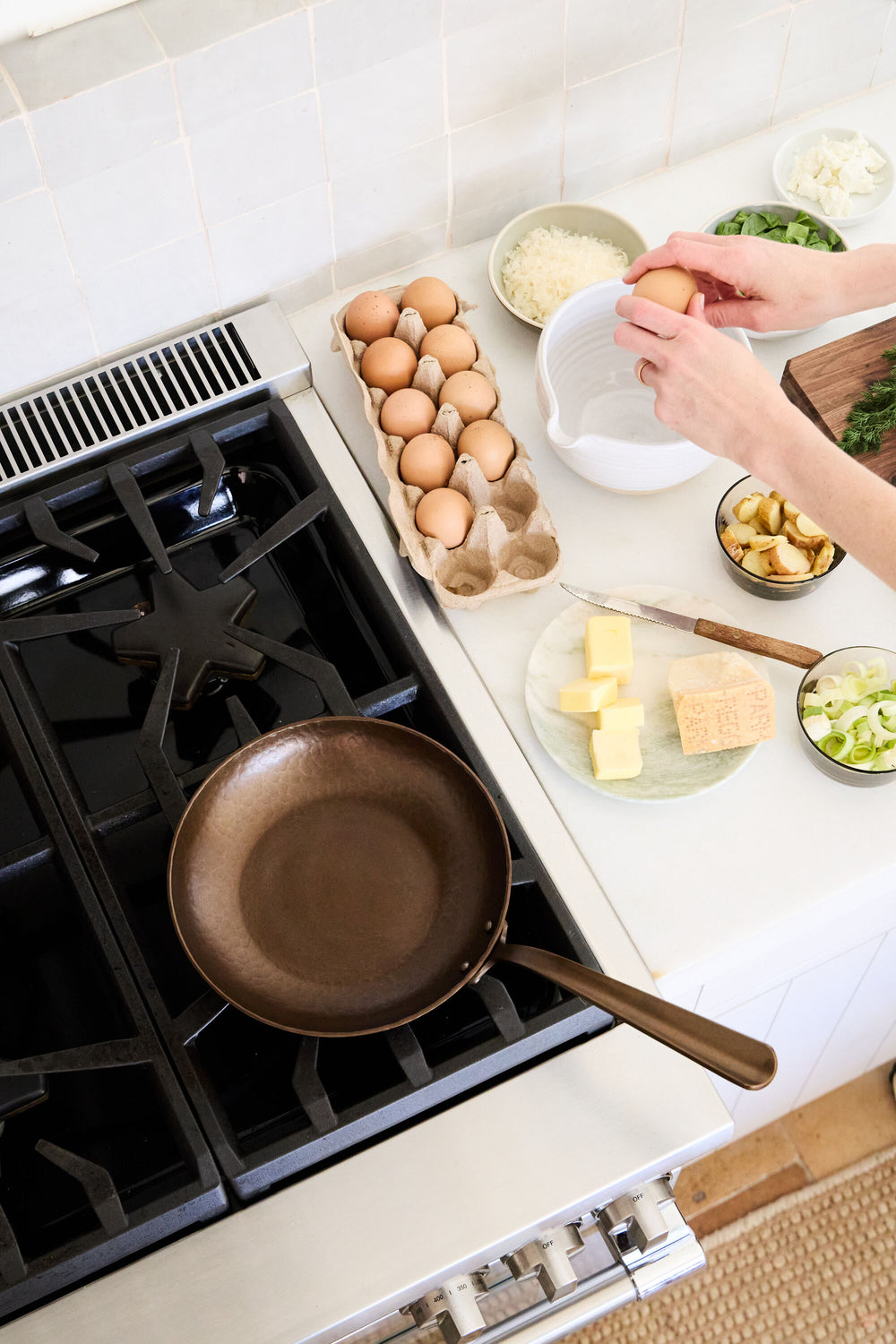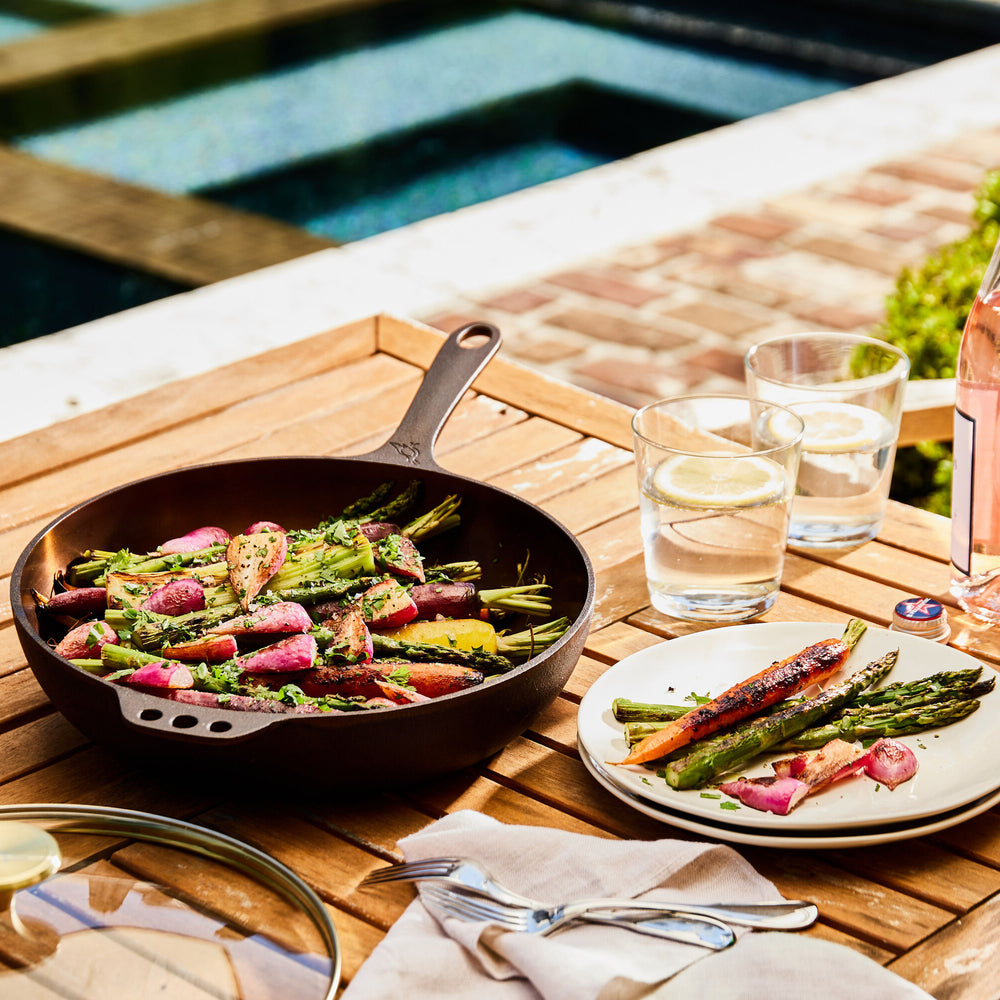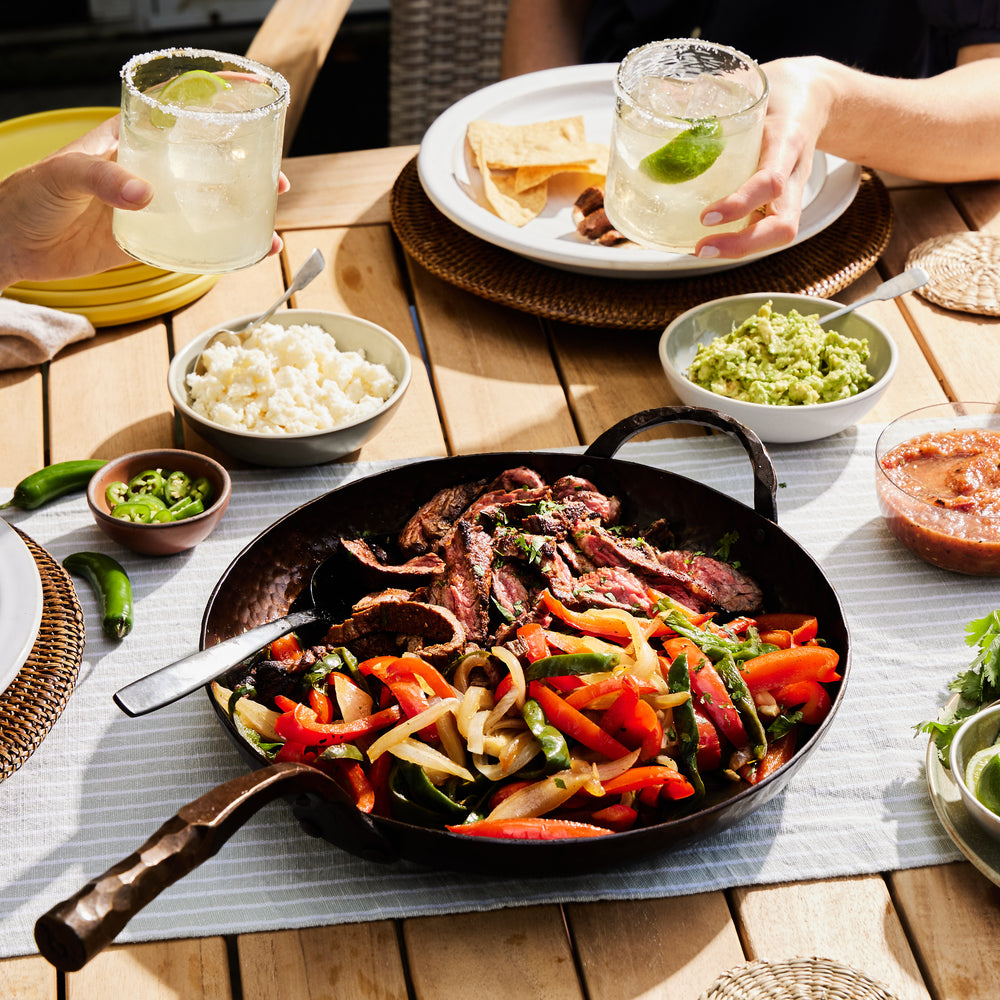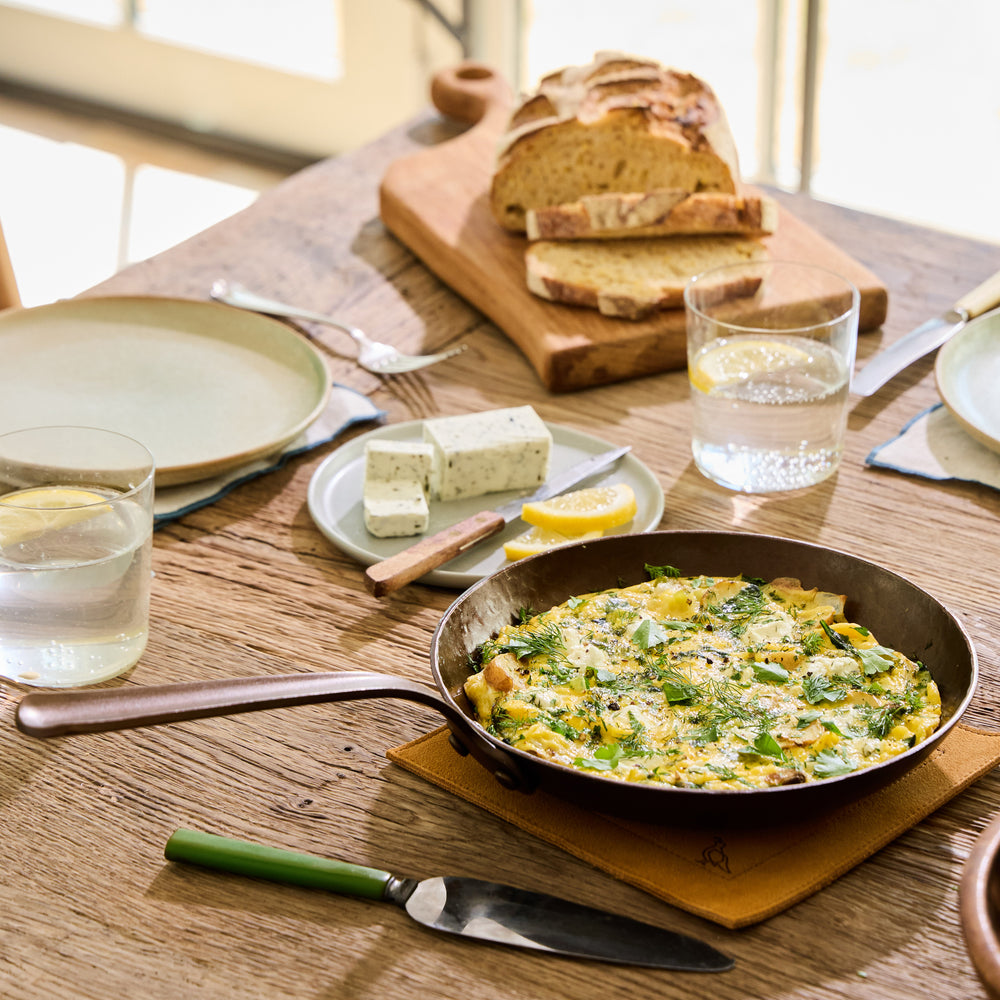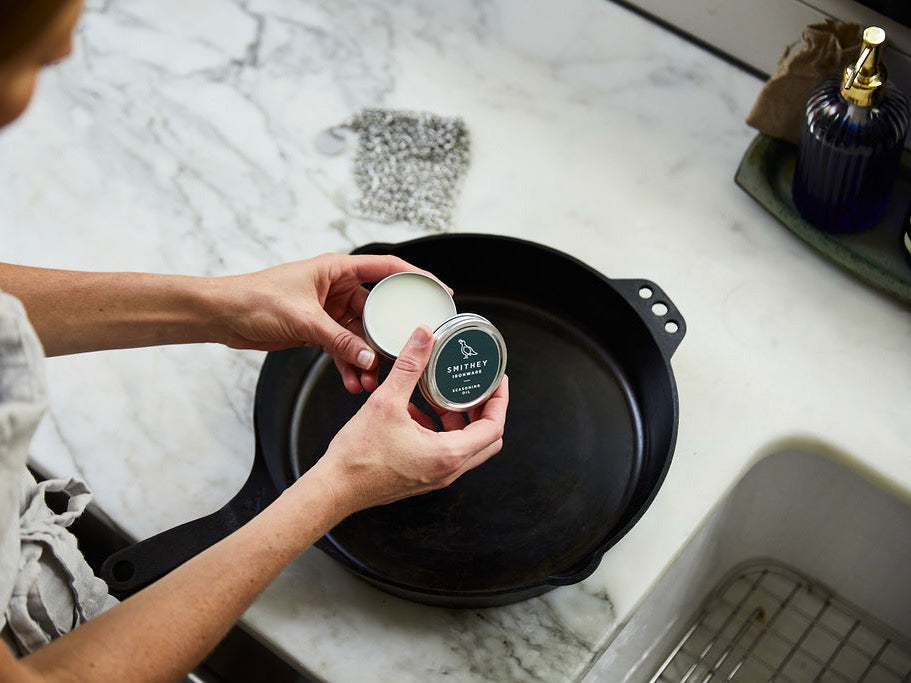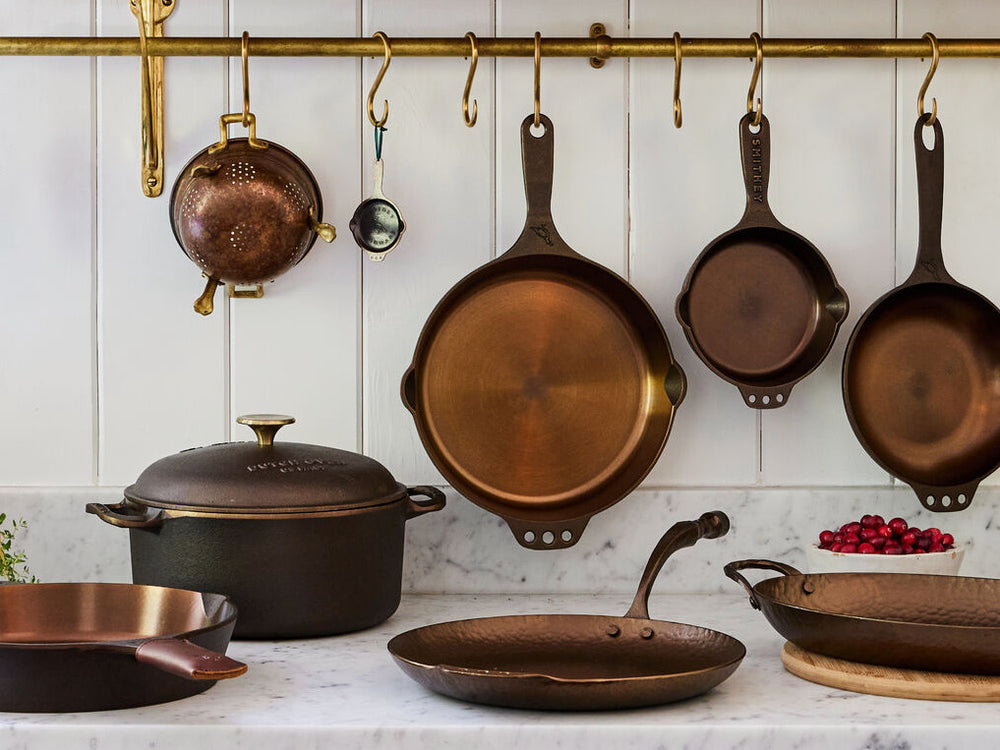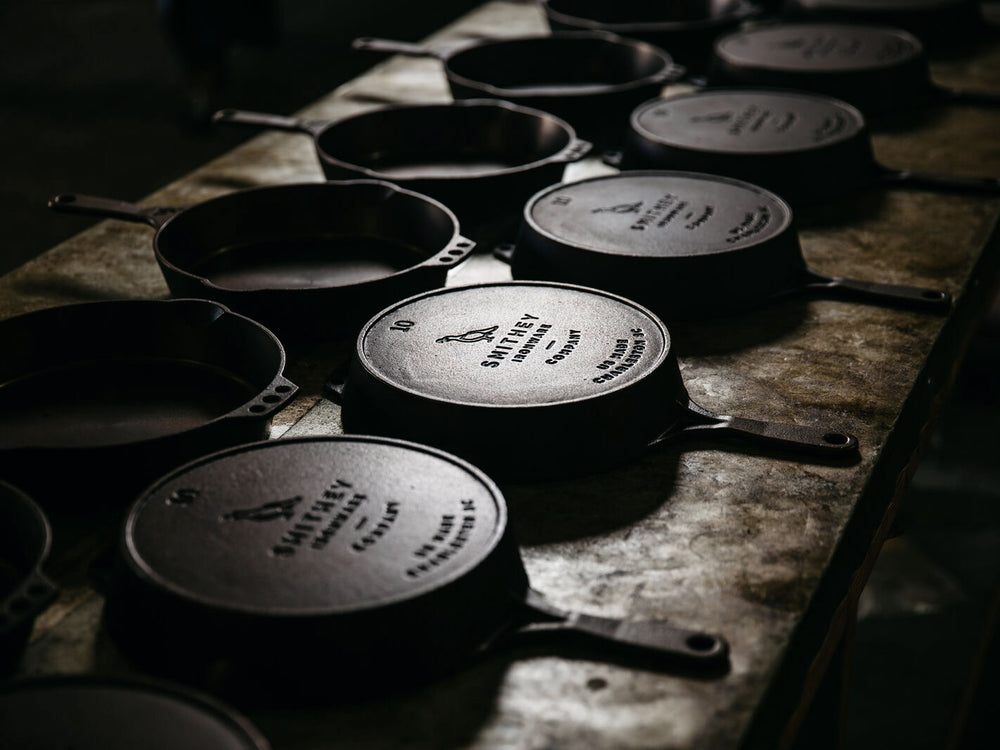Learning to Love the Grill Pan

We love cast iron at Smithey – that shouldn’t come as a surprise. We spend our days researching it, designing it, manufacturing it, and talking to people about it. What may be surprising is that we haven’t always loved cast iron grill pans. Give us a polished, seasoned traditional cast iron skillet any day of the week for searing, sautéing and baking. But for grill marks and smokey (?) flavor we’ve always felt that going outside and lighting up the charcoal grill is the way to go.
That said, we understand that not everyone has an outdoor grill handy, and this culinary dinosaur remembers his own post-college apartment days cooking boneless skinless chicken breasts on a George Forman grill, so in the spirit of open mindedness we decided to take a deeper look at grill pans. And a funny thing happened as we descended down the grill pan rabbit hole – we started to understand, appreciate, and yes, even love the cast iron grill pan.
So, what changed our minds? Let’s start with daily versatility. We used to think that grill pans served a limited role in the kitchen for those who didn’t have the time to walk outside and light a real fire. But as we began developing prototypes and testing vintage designs a light went off – when your grill is sitting right there in your kitchen, you can (and will) grill so many more things! Making a salad on a Tuesday night? That grill pan turns some romaine lettuce and a couple of peaches into a warm, charred bowl of deliciousness. Making a sandwich for lunch? A few minutes per side and you have a melty, warm panini that’s definitely better than the cold version. Avocados are good. Throw them on the grill and they’re even better. Same goes for onions. Or pineapple. Or even an apple. With some skewers those shrimp we picked up on the way back from the beach (Smithey is near the ocean – yes, we’re lucky) are now fun and tasty shrimp kebobs. Basically, we came to the realization that grill pans aren’t a cheat, they’re an excuse to grill more than we would otherwise. Our food tastes better for it.
But what about cleaning? A lot of people buy a cast iron grill pan with good intentions and then come to hate it once they have to clean it. We get it – the raised ridges in a grill pan create valleys for fats and oils to accumulate that can be a pain to scrub. Two things helped us get over our fear of cleaning.
One, we realized that we didn’t need to keep our grill pan spotless. The elevated ridges in Smithey’s design feature polished ‘peaks’ that quickly wipe down with a sponge after use – these are the surfaces that actually make contact with food and they naturally clean very easily. What lies between the ridges is less important - it will add to the seasoning and patina over time.
Two, we embraced the scrape. We naturally scrape the grates of our outdoor grill to clean it before heating, but the idea of scraping a cast iron grill pan seems less obvious. What we’ve found is that a light scrape with our chain mail scrubber or even the right-sized corner of a metal spatula will quickly remove stuck-on foods while leaving the seasoning in good shape. Basically, it’s okay to be a little rougher with our grill pan – unlike enameled cast iron pans, you won’t be damaging the surface and any seasoning that you take off can easily be put back on.
A note about ridge design (yes, that’s a thing.) The promise of a grill pan is that when you’ve finished cooking you’ll have beautiful, dark char marks on your food as a reward. In reality not every grill pan delivers here. Ridge height, spacing, width of the peaks, and orientation within the pan all play a role. We designed our grill marks in a diagonal pattern, allowing a north/south or east/west alignment of food with maximum usable cook surface and a simple-to-achieve cross-hatch pattern. We won’t bore you with much more than that but suffice to say that we spent way too much time thinking about ridges and believe we came up with the best ridge design out there.
Finally, a few other tips on using our grill pan. First, oil is your friend. A quick wipe of cooking oil with a paper towel is helpful before you cook and after you clean. We like grape seed oil, but feel free to use whatever you have in your kitchen. Second, crank up the heat (and if you have a hood or vent over your stovetop, crank that as well). Cast iron absorbs and retains heat exceptionally well – high heat will give you those beautiful char marks. Once the pan is hot and your food is in the pan you can turn the heat down but start with at least a medium-high preheat for several minutes. Third, think hard about the char. There are times you want the entire surface of your food to get a great sear (it’s how we prefer to cook steak). Use a traditional skillet for that. But when you want heat and some char while elevating your food above the fat and oil, the grill pan is your friend. So keep the grill pan out on your stovetop, use it often and use it well. You’ll love it much more than that George Forman grill in the attic.
 Skip to content
Skip to content
